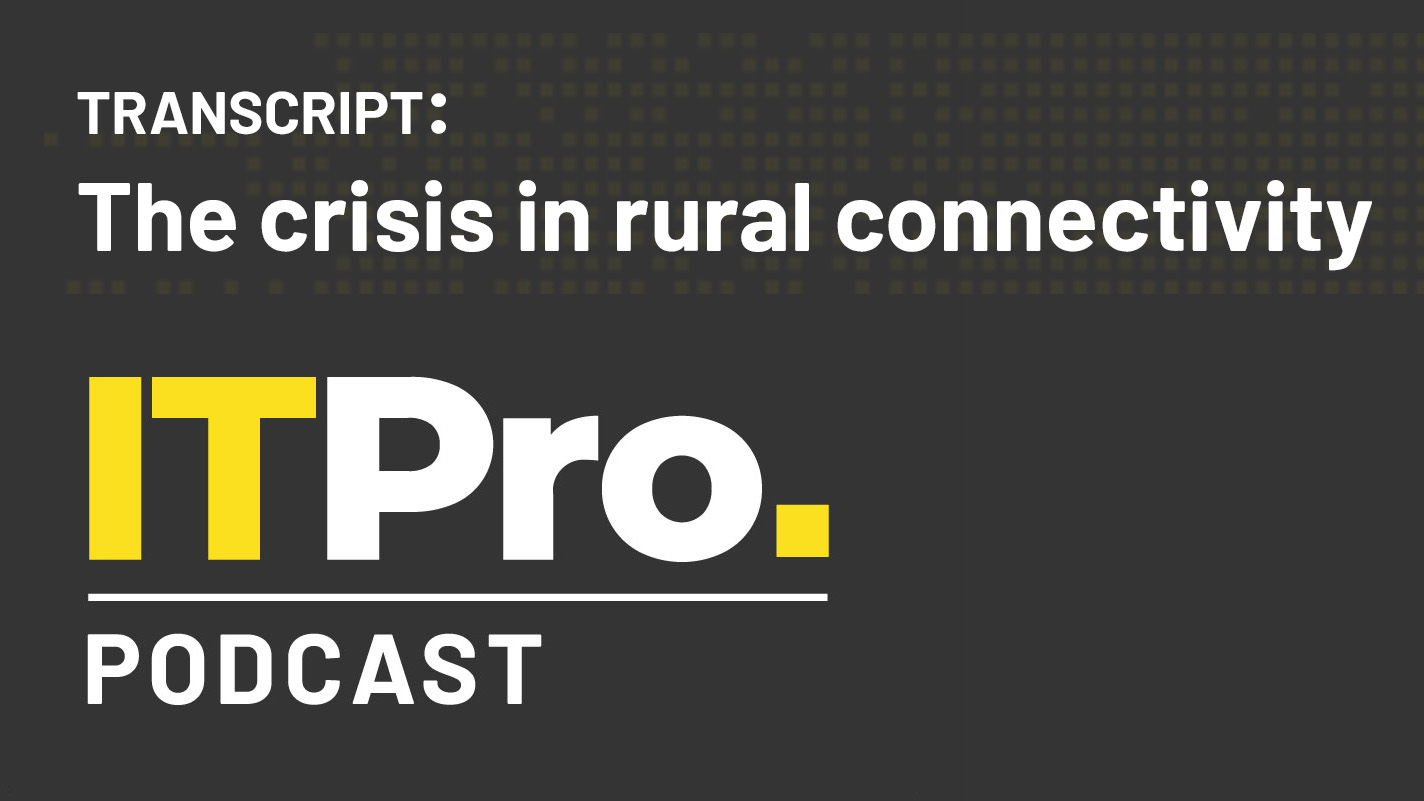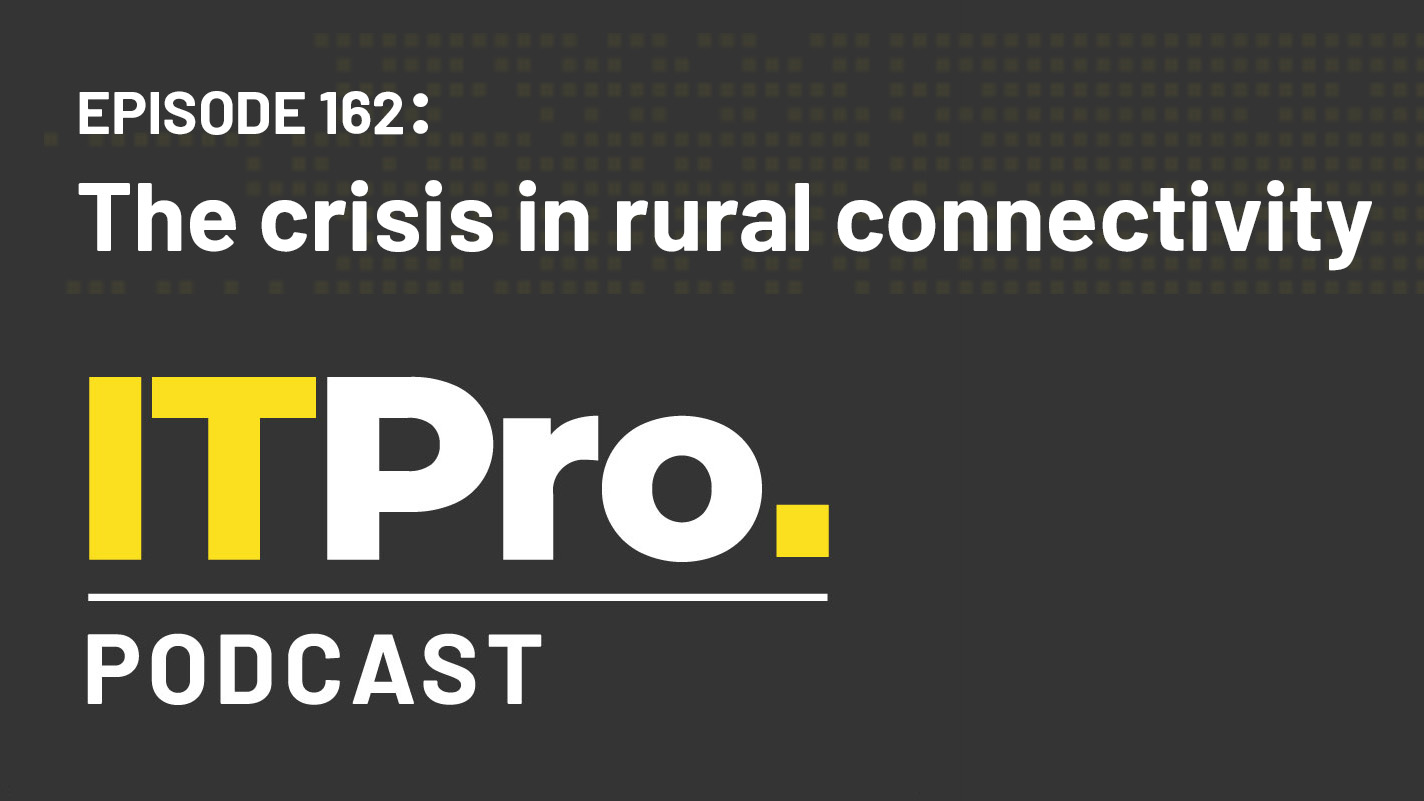What is bandwidth?
We what bandwidth is and why your internet connection sometimes slows to a crawl

Knowing what bandwidth is and how to measure it is still not universal knowledge, even though the internet plays a more important role in all our lives than ever before.
The term is used to refer to the maximum figure of data that can be sent via a network connection over a fixed period and is typically recorded per second.
Bandwidth only covers the capacity of a network, unlike latency which refers to delay from point to point as information traverses a network.
Over time, network bandwidth has increased considerably. Having begun being measured in bits per second, it is often now measured in megabits or gigabits per second.
What is bandwidth and why is it important?
Think of bandwidth as water flowing through a pipe. Depending on the width of the pipe - which stands in for bandwidth in this scenario - it would take more or less time to drain a reservoir through it.

Increasing the speed at which the water was put into the pipe would only go so far, as there would be an upper limit for how much it could physically contain at any given time.
Internet speed and bandwidth are still connected. If your bandwidth is very low, your network might experience bottlenecks that prevent important applications from working altogether.
Get the ITPro daily newsletter
Sign up today and you will receive a free copy of our Future Focus 2025 report - the leading guidance on AI, cybersecurity and other IT challenges as per 700+ senior executives
Those who have had to download important files over a shared connection while another co-worker uploads a large amount of data may will know just how disruptive this can be.
How do you measure bandwidth?
Measuring bandwidth may seem daunting, with terms like ‘Mbits/sec’ and ‘Gbits/sec’ potentially causing confusion. However, these simply refer to the ‘bits per second’ for your connection, measured either in megabits (one million bits) or gigabits (one billion bits)
Your internet service provider (ISP) will have provided you with your bandwidth in your contract. A speed testing tool will provide a number for the ‘throughput’ of your network - the actual figure of data transmitted over your network over a period.
There are a number of free tools for measuring this online, including Ookla’s Speedtest.net, the speed tests available on most ISP websites, or Google’s own that can be accessed by searching the term “speed test”.
There are a number of more detailed ways to measure both network throughput and bandwidth, listed in our measuring bandwidth guide.
In the UK, the current average broadband speed is 65.3 Mbits/sec, according to Ofcom, a helpful bandwidth for those in hybrid work. With a strong home connection, remote employees can confidently transfer large amounts of data, or take important video calls.
Those living in rural communities across the UK still struggle with connectivity and, as a result, are more likely to have poor bandwidth than those living in built-up areas.
For businesses, it's important to assess how much bandwidth you will need to perform your daily operations. That not only involves figuring out how many employees will be accessing the network at once but also taking into account the bandwidth requirements for any applications they will be using.
RELATED RESOURCE

Another thing to consider is the fact that the data has to flow through several connections to reach you, and your connection to your ISP might impact your bandwidth speeds.
It's also important to remember that even if you have plenty of bandwidth available, you will need to reduce the network's latency in order to improve the speed at which data packets move across the network. This is particularly important for applications and services that require high data transfer rates beyond what a normal network connection can provide.
Depending on your provider, where your business operates, and what kind of internet service you pay for, you might have a different internet connection. Here are the possibilities:
FTTP (fiber to the premises) - This is easily the fastest kind of service and can deliver up to gigabit broadband. It is especially useful for office buildings and sees fiber optic cables run right up to your property, supporting higher capacity lines direct to your business infrastructure.
Ofcom’s Connected Nations 2022 report [PDF] stated that 42% of UK premises now have access to FTTP broadband.
FTTC (fiber to the cabinet) - By far the most common connection in the UK, FTTC sees internet service providers (ISPs) link your home to a cabinet on the street with copper wires - much slower than the fiber-optic cables connecting the cabinet to a telephone exchange.
FTTN (fiber to the node) - A node is just further away than a cabinet (miles further, sometimes), potentially slowing your internet connection even more.
If slow bandwidth becomes a more common occurrence, you might want to check with your broadband provider.
Bandwidth glossary
Although bandwidth may be fairly straightforward, it's always useful to read up on the most common terms used in this field. Here's a selection of them:
Data packet: A unit of data made into a single package that travels along a network path. It's a small amount of data sent over a network and, just like a real-life package, contains a source and destination, as well as the content being transferred.
Broadband: This is wide bandwidth data transmission which transports multiple signals and traffic types. It provides high-speed internet access through multiple mediums like coaxial cable, optical fibre, radio, or twisted pair.
ISP: This stands for internet service provider, normally referring to the company that is providing you with access to the internet.
Latency: This is the time it takes one data packet to travel from its source to its destination, or in other words, the delay between a user's action and the response from a network.
Dale Walker is a contributor specializing in cybersecurity, data protection, and IT regulations. He was the former managing editor at ITPro, as well as its sibling sites CloudPro and ChannelPro. He spent a number of years reporting for ITPro from numerous domestic and international events, including IBM, Red Hat, Google, and has been a regular reporter for Microsoft's various yearly showcases, including Ignite.
-
 Why keeping track of AI assistants can be a tricky business
Why keeping track of AI assistants can be a tricky businessColumn Making the most of AI assistants means understanding what they can do – and what the workforce wants from them
By Stephen Pritchard
-
 Nvidia braces for a $5.5 billion hit as tariffs reach the semiconductor industry
Nvidia braces for a $5.5 billion hit as tariffs reach the semiconductor industryNews The chipmaker says its H20 chips need a special license as its share price plummets
By Bobby Hellard
-
 Gov's broadband plans do little to address 'rural brain drain', expert warns
Gov's broadband plans do little to address 'rural brain drain', expert warnsNews Businesses are still unable to compete with urban counterparts, forcing job seekers into the cities and suppressing innovation
By Rory Bathgate
-
 Podcast transcript: The crisis in rural connectivity
Podcast transcript: The crisis in rural connectivityIT Pro Podcast Read the full transcript for this episode of the IT Pro Podcast
By IT Pro
-
 The IT Pro Podcast: The crisis in rural connectivity
The IT Pro Podcast: The crisis in rural connectivityITPro Podcast Rural businesses are still being left behind and face shutdowns of 3G and copper without anything to fall back on
By IT Pro
-
 UK government to run Starlink trials in Snowdonia, Lake District
UK government to run Starlink trials in Snowdonia, Lake DistrictNews The government has indicated low-Earth orbit satellites could be key to expanding connectivity to UK businesses
By Rory Bathgate
-
 Satellite broadband could turbocharge rural business connectivity
Satellite broadband could turbocharge rural business connectivityIn-depth The burgeoning industry is pledging to succeed where fibre has failed, in a much-needed push to connect chronically underserved businesses
By Rory Bathgate
-
 Podcast transcript: Can 5G close the digital divide?
Podcast transcript: Can 5G close the digital divide?IT Pro Podcast Read the full transcript for this episode of the IT Pro Podcast
By IT Pro
-
 The IT Pro Podcast: Can 5G close the digital divide?
The IT Pro Podcast: Can 5G close the digital divide?IT Pro Podcast Connectivity is essential for modern life - but can 5G help bring it to those without?
By IT Pro
-
 BT's 'SoHo' business aims to help SMBs rebuild post-pandemic
BT's 'SoHo' business aims to help SMBs rebuild post-pandemicNews The spin-off will offer broadband packages, free digital skills training and cyber security tools to SMBs and startups
By Sabina Weston